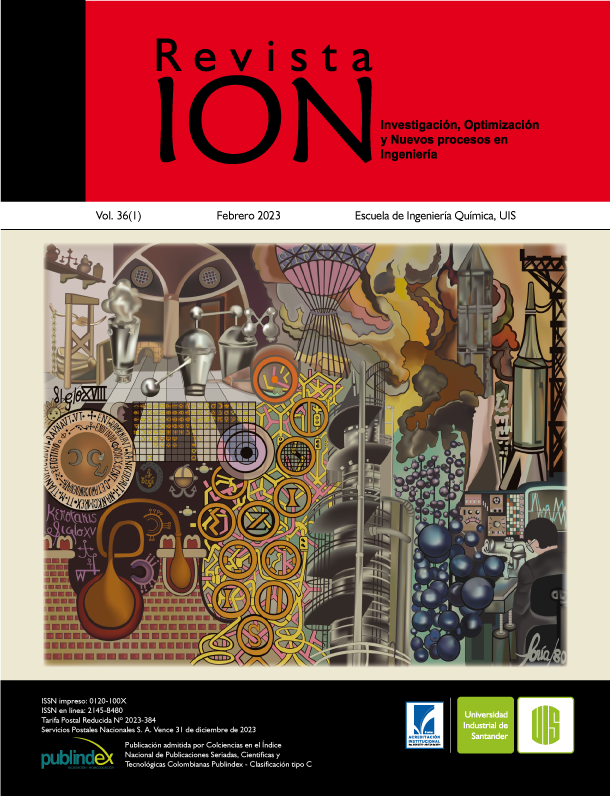Uso do MASP (Método de Análise e Solução de Problemas) para possibilitar a reprodução de método de cromatografia líquida
Publicado 2023-02-28
Palavras-chave
- MASP,
- Cromatografia,
- Qualidade,
- CLAE,
- Sorbitol
Como Citar
Copyright (c) 2023 Kaliane Regalin Aver

Este trabalho está licenciado sob uma licença Creative Commons Attribution 4.0 International License.
Resumo
The aim of this work is to use MASP (analysis and problem solving method) to develop and/or reproduce a chromatographic method for the analysis of sorbitol in whole grape juice, making possible the identification of frauds and adulterations in this beverage. Although different chromatographic methods for this analysis are available in the literature, the efficiency, selectivity and robustness of a chromatographic method are directly related to the conditions available in each laboratory. Therefore, the repetition of parameters previously determined in the literature does not ensure good results. During the reproduction of the sorbitol analytical method, an interference has been identified as the cause of the low resolution of the analyte peak. In such wise, the MASP was presented as a method for identifying and solving a problem. Owing to the metodology, it was possible list the possible root causes, elaborate and practice different action plans, eliminate certains causes based on action plans results, improving the understanding about the problem and, finally, detecting the root cause. With the cause determined, it was possible to reposition the modules of the HPLC equipment, reducing the length of the capillary between the outlet of the separation column and the inlet of the RID detector. Thus, the MASP was a practical and efficient method to identify and solve the problem, allowing the development of a selective and robust method for the analysis of sorbitol by HPLC in whole grape juices.
Downloads
Referências
- Kennedy SP, Gonzales P, Roungchun J. Coffee and tea fraud. En: Food Fraud. Academic Press; 2021. p. 139-150. doi.org/10.1016/B978-0-12-817242-1.00016-6
- Cifuentes A. Comprehensive Foodomics: bioactivity quality safety omics. Amsterdam: Elsevier, 2021.
- Nðñez N, Saurina J, Nðñez O. Nontargeted HPLC-FLD fingerprinting for the detection and quantitation of adulterated coffee samples by chemometrics. Food Control. 2021;124:107912. doi.org/10.1016/j.foodcont.2021.107912
- Perutka Z, Voženílek V, Šebela M. Wine Contaminations and Frauds From the Bioanalytical and Biochemical Points of View. En: Comprehensive Foodomics. Elsevier; 2021. p. 104-116. doi.org/10.1016/B978-0-08-100596-5.22835-7
- Silvello GC, Bortoletto AM, de Castro MC, Alcarde AR. New approach for barrelaged distillates classification based on maturation level and machine learning: a study of cachaça. Lwt. 2021;140:110836. doi.org/10.1016/j.lwt.2020.110836
- BRASIL, 1990. Decreto n° 99.066, de 8 de março de 1990.
- Oliveira RRD, Almeida FPD, Paula JFD. A Aplicação do MASP para Reduzir os Acidentes de Trabalho nos Canteiros de Obra. Simpósio de Engenharia de Produção, 2017, Catalão (GO), 2017, Catalão. Engenharia e Desenvolvimento de Produtos e Processos, 2017.
- Tavares MTJ. Validação de método HPLC-UV para determinação de impurezas genotóxicas (Dissertação Mestrado). Aveiro, Portugal: Universidade de Aveiro; 2011.
- Martínez Mejía MJ. Desenvolvimento e Validação de métodos para a determinação de aminoglicosídeos em medicamentos veterinários (Dissertação Mestrado). São Paulo, Brasil: Universidade Estadual de Campinas; 2013.
- Aragão NMD, Veloso MCDC, Andrade JBD. Validação de métodos cromatográficos de análise – um experimento de fácil aplicação utilizando cromatografia líquida de alta eficiência (CLAE) e os princípios da “Química Verde” na determinação de metilxantinas em bebidas. Quím. Nova. 2009;32(9):2476-81. doi.org/10.1590/S0100-40422009000900043
- Albano FDM, Raya-Rodriguez MT. Validação e Garantia da Qualidade de Ensaios Laboratoriais: guia prático. Brasil: Porto Alegre: Rede Metrológica RS; 2009.
- Castro RSD. Desenvolvimento de metodologia analítica para determinação de fármacos mediante cromatografia líquida de alta eficiência utilizando planejamento multivariado (tese de graduação). Porto Alegre, Brasil: Universidade Federal do Rio Grande do Sul; 2018.
- Lima, ACD, Quiarato MA, Correa THP, Fuzeto AP. Aplicação e desenvolvimento do MASP (método de análise e soluções de problemas) em instituição sem fins lucrativos. Associação Brasileira de Engenharia de Produção. XXXVII Encontro Nacional De Engenharia De Producao; 2017 out 10-13; Joinville, Brasil. 2017. p. 1-19.
- Lanças, FM. Cromatografia Líquida Moderna: HPLC/CLAE. Brasil: Editora Átomo; 2009.
- Grefstad, AP. Kvantitativ analyse med høyoppløselig væskekromatografi og tandem massespektroskopi på perfluoroktansyre og perfluoroktansulfonat i vann behandlet med aktivt kull og karbonfiber ved ulike betingelser (Dissertação Mestrado). Ås, Noruega: Universidade Norueguesa de Ciências da Vida; 2015.
- Nesi J. Aplicação do método de análise e solução de problemas (MASP) em uma empresa de fabricação de panelas de alumínio (trabalho de especialização). Paraná, Brasil: Universidade Tecnológica Federal do Paraná, Francisco Beltrão; 2019.
- Lorenzon E. Utilização do MASP (Método De Análise E Solução De Problemas) em uma granja de suínos. (Doutorado). Rio Grande do Sul, Brasil: Universidade do Vale do Taquari - Univates, Lajeado; 2018.
- BIO-RAD. Guidelines for use and care of Aminex resin-based columns: instruction manual. Califórnia: Bio-Rad, 2020.
- Ruiz-Matute AI, Sanz ML, Moreno-Arribas MV, Martínez-Castro I. Identification of free disaccharides and other glycosides in wine. Journal Of Chromatography A. 2009;1216(43):7296-7300. doi.org/10.1016/j.chroma.2009.08.086
- Fuleki T, Pelayo E. Sugars, alcohols, and hydroxymethylfurfural in authentic varietal and commercial grape juices. Journal of AOAC International. 1992;76(1):59-66. doi.org/10.1093/jaoac/76.1.59

